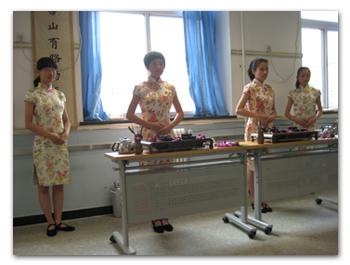 The many delegations of Chinese educators we’ve hosted in Brewster, New York over the past seven years, inevitably ask us one question: “How do we teach our kids to be creative?”
The many delegations of Chinese educators we’ve hosted in Brewster, New York over the past seven years, inevitably ask us one question: “How do we teach our kids to be creative?”
Over the last seven years as the Brewster School District superintendent, I’ve had the great good fortune to develop high school partnerships between Brewster High School and high schools in Beijing, Shanghai and Xian. We’ve sent over a hundred students to our sister schools there. Our students lived with host families and in addition to attending classes had a chance to cook with the grandmas, watch the Olympic torch carried through the streets with their Chinese classmates and friends, and post-college, find work with international companies headquartered in Beijing. Our students went on to gain mastery of the Mandarin that they started to learn in middle school. More important, they became global citizens with not only a new appreciation for a very foreign land, but also a new appreciation for what they have as Americans.
While we are moving in the direction of more testing and a more monolithic curriculum and national standards, Chinese educators are moving in the opposite direction.
During this time, we have hosted many Chinese students who similarly lived with American families and attended classes with their new Putnam County friends. They accompanied the families to theater on Broadway, visited colleges, and spent some weekends in summer homes in Maine and on Long Island. They learned that American kids study and work hard as well as play hard. Stereotypes, East and West no longer held.
 I was struck by the discipline of our Chinese students and the serious discussions that we had with them, their principals and teachers about the goals of an education; about their hopes and dreams. Not much different from ours. I was in awe of how well these students did in our Advanced Placement classes given they were attending classes in English and in US History not just Physics and Calculus. Our own students were somewhat embarrassed by how they were unable to speak to their new friends in Mandarin (and how proficient their counterparts’ English was) and as a result worked much harder learning a new language.
I was struck by the discipline of our Chinese students and the serious discussions that we had with them, their principals and teachers about the goals of an education; about their hopes and dreams. Not much different from ours. I was in awe of how well these students did in our Advanced Placement classes given they were attending classes in English and in US History not just Physics and Calculus. Our own students were somewhat embarrassed by how they were unable to speak to their new friends in Mandarin (and how proficient their counterparts’ English was) and as a result worked much harder learning a new language.
I began this exchange after I had read Thomas Friedman’s book, “The World is Flat.” I believe the best way for our students to become global citizens is to get out of Dodge and practice being a global citizen while still in school. 100% of students who have been involved with the program, report that it has been the most meaningful and transformative part of their school experience. Our Board of Education, administration and community have been wonderful in support of these exchanges. For some of our students, their first experience on an airplane was to Beijing.
I too have been transformed by my visits to China and the friendships I’ve made with students, teachers, and administrators from our sister schools. Their warmth and hospitality are impressive. So I struggle with the answer to the question about creativity. I don’t want to give a simple, short glib response. While we have already moved to administer more standardized tests and a monolithic curriculum and national standards, Chinese educators are moving in the opposite direction.
It is hard to undo centuries of an education system built around the performance on one test to determine the future of a child and of a nation. The dismantling of that idea is exactly what is beginning to happen throughout schooling in China. Just as educators in that country realize that one needs to pay attention to the unique talents and gifts of each child, we need to return to that belief here in America. That belief is how we “teach” creativity. It is who we are and accounts for our greatness as a nation. That greatness is not measured by performance on a pencil and paper test and never has been. We need no more reform movements. We need to remember that what our schools have historically done is how we became the nation that is the envy of the free world. And we need to return to what we do best in schools: value each and every child and teach them well.

Recent Comments